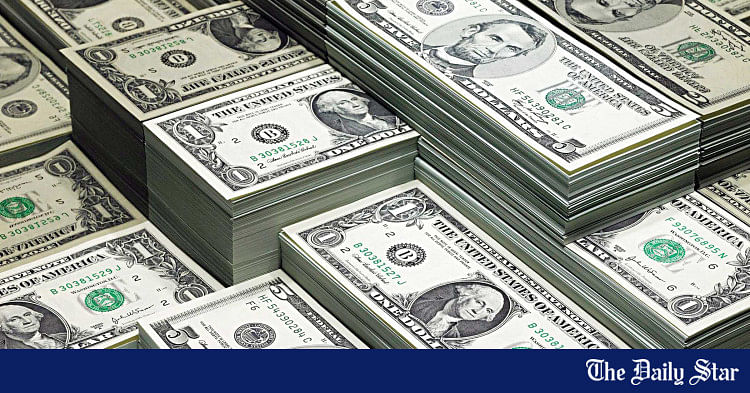Liquidity in the foreign exchange market is increasing due to a rise in the inflow of US dollars, riding on growing remittance, export earnings and cu
Liquidity in the foreign exchange market is increasing due to a rise in the inflow of US dollars, riding on growing remittance, export earnings and currency swap deals.
Banks’ net open position (NOP) in foreign exchange, meaning the difference between their assets and liabilities in foreign currency, stood at $606 million on March 11, Bangladesh Bank data showed.
It was $40 million in the negative on January 1, before rising to $125 million on February 1 and then to $412 million at the end of February.
Industry insiders attributed the NOP increase to a rise in the inflow of the US dollar, which indicates that the foreign exchange market was increasingly gaining stability.
An increase in remittance over the last two months, growing exports, and initiatives of the central bank gave a boost to the inflow of foreign exchange in banks, Mirza Elias Uddin Ahmed, managing director of Jamuna Bank, told The Daily Star today.
Remittance inflow soared 39 percent year-on-year in February to $2.16 billion, the highest in eight months. It went up 8 percent to $2.10 billion in January.
Exports totalled $10.91 billion in January and February, the highest in the two months.
Under the currency swap deal introduced by the central bank in February, commercial banks can take the local currency from the BB in exchange for the US dollar for a tenure ranging from seven days to 90 days.
“The inflow of the US dollars and the local currency increased after the introduction of the swap while foreign currency reserves were also growing,” said Mezbaul Haque, spokesperson of the BB, last week.
The reserves currently stand at around $20 billion.
People who have US dollars in cash now can park them in banks as the central bank has increased the interest and various benefits on resident foreign currency deposits (RFCD) accounts, said the managing director of Jamuna Bank.
In December, the central bank issued a notice saying banks would be able to pay more than 7 percent in interest on the RFCD. Besides, various benefits, including the ability to transfer money abroad and avail of multiple cards, are allowed through the RFCD accounts.
The exchange rate of the US dollar against the taka in the kerb market also decreased because of the high inflows of the former.
Several foreign exchange dealers today were found selling each US dollar at Tk 120 and buying them at Tk 118 to Tk 119, down Tk 4 to Tk 5 from a week earlier.
Falling import payments also played a part in lowering the exchange rate, said a senior official of the central bank.
During the July-January period of this fiscal year, import payments stood at $36.02 billion, down from $44.02 billion in the same period of the previous fiscal year.
The BB official said there was now increased liquidity in the local currency market as the forex exchange market saw some stability.
Now banks are taking liquidity support from the central bank in exchange for US dollars under the currency swap deal, he added.
The overnight average call money rate, the rate at which short-term funds are lent and borrowed among banks, stood at 8.58 percent on March 14, down from 9.30 percent a month ago.
“This is a reflection of the money market gaining stability,” the official said.
www.thedailystar.net

COMMENTS